30 Poisonous Plants to Dogs and Cats
30 Poisonous Plants to Dogs and Cats Commonly Found in our Yard and Home
This page may contain affiliate links. Click here to read my affiliate policy.
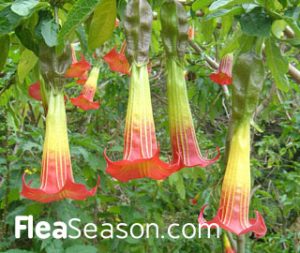 Find below my list of garden plants and house plants that are toxic and poisonous to dogs and cats, and at the very least will make them sick.
Find below my list of garden plants and house plants that are toxic and poisonous to dogs and cats, and at the very least will make them sick.
We all have plants in our house and yard that are poisonous to our pets – dogs and cats alike. Most often, we aren’t even aware specific plants are toxic to our pets. A few years ago, I spent a good sum of money buying and planting a large assortment of Angel Trumpet plants in my front yard.
It wasn’t until ‘after’ they were in the ground for a few weeks- I learned by reading online that Trumpet plants and vines were not only poisonous to dogs, but also caused paralysis to humans if certain area of the plants were handled. So, I ended up digging up all my beautiful Trumpet plants and putting them in the yard waste recycle bin. Ugh!
There are over 700 plants having the potential to be poisonous or toxic to dogs and cats. If you have a pet that’s a couch potato and not a big explorer – then having these plants in and around your home probably isn’t going to be an issue. However, if you bring a new pet into your home, or your pet is a curiosity hound – just be aware the danger is there for potential poisoning.
If you suspect that your pet has been poisoned, contact the American Society for the Prevention of Cruelty to Animals (ASPCA) Poison Control Center at 1-888-426-4435. This is a 24 hour a day hotline. (In some cases a consultation fee may be charged to your credit card.)
Top 10 Most Common Poisonous Plants to Pets:
| Azalea | Toxins in Azalea plants can be extremely severe and potentially cause drooling, diarrhea, vomiting, central nervous system weakening and depression, and in some cases possibly coma or death. |
| Castor Bean | Poisoning as a result of the Castor Bean may cause abdominal pain, drooling, diarrhea, vomiting increased thirst, loss of appetite and weakness. More serious cases will also lead to dehydration, tremors, seizures, twitching muscles, coma and in some cases, death. |
| Cyclamen | The most poisonous portion of the Cyclamen is located within the root. Cyclamen ingestion can cause severe vomiting and gastrointestinal irritation. There have been cases of death reported as a result of ingesting Cyclamen. |
| Kalanchoe | Ingestion of the Kalanchoe plant may cause gastrointestinal irritation with cardiac rhythm and rate problems. |
| Lilies | Plants of the Lily variety are extremely poisonous to cats. Ingestion of even very small amounts of this plant can cause serious kidney damage. |
| Marijuana | Animals who snack on the Marijuana plant can suffer serious consequences such as diarrhea, vomiting, increased heart rate, drooling, in-coordination, and even possibly seizures and coma. |
| Oleander | All portions of the Oleander plant are poisonous and will cause gastrointestinal irritation, hypothermia, heart problems and possibly death. |
| Sago Palm | While the seeds and nuts of the Sago Palm plant are most poisonous, the entire plant is toxic. Animals ingesting parts of this plant most often suffer from diarrhea, vomiting, depression, seizures and liver failure. |
| Tulips | The most toxic portion of the Tulip plant is the actual bulb, which will cause drooling, central nervous system depression, gastrointestinal irritation, cardiac issues and convulsions. |
| Yew | Poisoning as a result of ingesting the Yew plant will affect the nervous system and cause abnormal coordination, trembling and breathing difficulties. May also result in gastrointestinal irritation, cardiac failure and may possibly lead to death. |
Additional Common Plants that can be Poisonous or Toxic to Pets:
Some of these plants are considered poisonous to humans and dogs & cats.
Some of these plants are considered toxic to just pets > dogs & cats and not humans.
Aconite
Garden flower he roots, foliage and seeds of this garden poisonous.
Angel’s Trumpet
Ornamental garden plant with the seeds and leaves being especially dangerous. Ingestion may include paralysis of smooth muscles, confusion, tachycardia, dry mouth, diarrhea, migraine headaches, visual and auditory hallucinations, mydriasis, rapid onset cycloplegia, and death.
Apple
Apple seeds can be poisonous to pets.
Arrowgrasses
Marsh type plants whose leaves contain poisons.
Atropa Belladonna
Garden herb with entire plant being poisonous to pets, especially the seeds and roots.
Autumn Crocus
Garden flower where the entire plant can be poisonous.
Baneberry
Wildflower with poisonous berries and roots.
Bird of Paradise
Garden flower with the pods being poisonous.
Black Locust
Tree in which the entire plant can be poisonous, especially the bark and shoots.
Bloodroot
Wildflower and herb whose stem and roots are most poisonous, however the entire plant is toxic.
Box
Ornamental shrub that’s poisonous in its entirety, but especially the leaves.
Buckeye
Tree whose sprouts, nuts and seeds contain poisons.
Buttercup
Wildflower and garden herb that’s poisonous in its entirety but mostly in the leaves.
Caladium
Houseplant that’s poisonous in its entirety.
Carolina Jessamine
Ornamental plant whose flowers and leaves contain poisons.
Chinaberry Tree
Tree whose berries are poisonous.
Chockcherries
Wild shrub, poisonous parts include the leaves, cherries and pit.
Christmas Rose
Garden flower with toxic leaves and rootstock.
Common Privet
Ornamental shrub whose leaves and berries can be poisonous.
Corn Cockle
Wildflower and weed whose seeds are particularly poisonous.
Cowbane
Wildflower and herb that’s poisonous in its entirety, especially the roots.
Cow Cockle
Wildflower and weed whose seeds are poisonous.
Cowslip
Wildflower and herb whose entire plant is poisonous, especially the leaves and stem.
Daffodil
Garden flower whose bulbs are poisonous.
Daphne
Ornamental shrub that contains poisonous bark, berries and leaves.
Death Camas
Field herb poisonous parts include the leaves, stems, seeds and flowers.
Delphinium
Garden flower that’s poisonous in its entirety, especially the sprouts.
Dumbcane
Houseplant and is poisonous in its entirety.
Dutchman’s Breeches
Wild and garden flower with poisonous roots and foliage.
Elderberry
Tree poisonous parts include the leaves, bark, roots and buds.
Elephant’s Ear
Houseplant poisonous in its entirety.
English Ivy
Ornamental vine completely poisonous but especially the leaves and berries.
European Bittersweet
Vine poisonous in its entirety but especially in the berries.
False Flax
Wild herb whose seeds are poisonous.
False Hellebore
Ornamental flower whose roots, leaves and seeds are toxic.
Fan Weed
Wildflower and herb whose seeds are poisonous.
Field Peppergrass
Wildflower and herb that contains poisonous seeds.
Flax
Wildflower and herb whose seedpods contain poisons.
Foxglove
Wild and garden flower whose leaves are poisonous.
Holly
Shrub containing poisonous berries.
Horse Chestnut
Tree containing poisonous nuts and sprouts.
Horse Nettle
Wildflower and herb poisonous in its entirety, primarily the berries.
Hyacinth
Wild and houseplant whose bulbs are poisonous.
Iris
Wild and garden flower whose leaves and roots are poisonous.
Jack-in-the-Pulpit
Wildflower that is entirely poisonous, especially the leaves and roots.
Jatropha
Tree and shrub whose seeds are poisonous.
Jerusalem Cherry
Ornamental plant whose un-ripened fruit and foliage are poisonous.
Jimsonweed
Field plant that is entirely poisonous, primarily the seeds.
Laburum
Ornamental plant whose seeds, pods and flowers can be poisonous.
Lantana
Houseplant with poisonous foliage.
Larkspur
Wildflower which is poisonous only as a young plant.
Laurels
Type of shrub with poisonous leaves.
Lupines
Shrub whose seeds and pods are poisonous.
Manchineel Tree
Tree containing poisonous sap and fruit.
Matrimony Vine
Ornamental vine with poisonous leaves and shoots.
Mayapple
Wildflower poisonous in the form of its un-ripened fruit as well as the foliage and roots.
Milk Vetch
Wildflower poisonous in its entirety.
Mistletoe
Houseplant with poisonous berries.
Monkshood
Wildflower poisonous in its entirety, especially the roots and seeds.
Moodseed
Vine with poisonous fruit and roots.
Morning Glory
Wildflower containing poisonous seeds and roots.
Mountain Mahogany
Shrub with poisonous leaves.
Mustards
Wildflowers whose seeds can be poisonous.
Narcissus
Garden flower whose bulbs contain poisons.
Nicotiana
Garden flower whose leaves are poisonous.
Nightshade
Wildflower and vine with poisonous leaves and berries.
Oak
Tree with poisonous leaves and shoots.
Philodendrons
Houseplants poisonous in their entirety.
Pokeweed
Field plant containing poisonous roots, seeds and berries.
Poinsettia
Houseplant with poisonous leaves, flowers and stems.
Poison Hemlock
Field plant containing poisonous leaves, stems and fruit.
Potato
Garden plant with poisonous shoots and sprouts.
Rattle Box
Wildflower that is entirely poisonous.
Rhododendron
Ornamental shrub with poisonous leaves.
Rhubarb
Garden plant with poisonous leaves.
Rosary Pea
Houseplant whose seeds are poisonous.
Skunk Cabbage
Marsh plant whose entire plant is poisonous but especially the roots and leaves.
Smart Weeds
Wildflowers containing poisonous sap.
Snow-on-the-Mountain
Wildflower with poisonous sap.
Sorghum
Type of grass whose leaves are poisonous.
Star of Bethlehem
Wildflower poisonous in its entirety.
Velvet Grass
Grass variety whose leaves are poisonous.
Wild Black Cherry
Tree with poisonous leaves and pits.
Wild Radish
Wildflower with poisonous seeds.
Wisteria
Ornamental plant containing poisonous seeds and pods.
Woody Aster
Wildflower whose entire plant is poisonous.
Yellow Jessamine
Ornamental vine that is entirely poisonous.
Yellow Pine Flax
Wildflower poisonous in its entirety but especially in the seedpods.
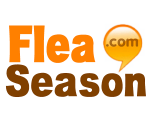
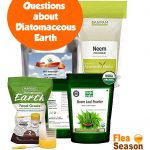
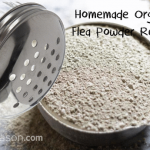











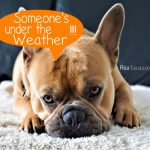


Connect: